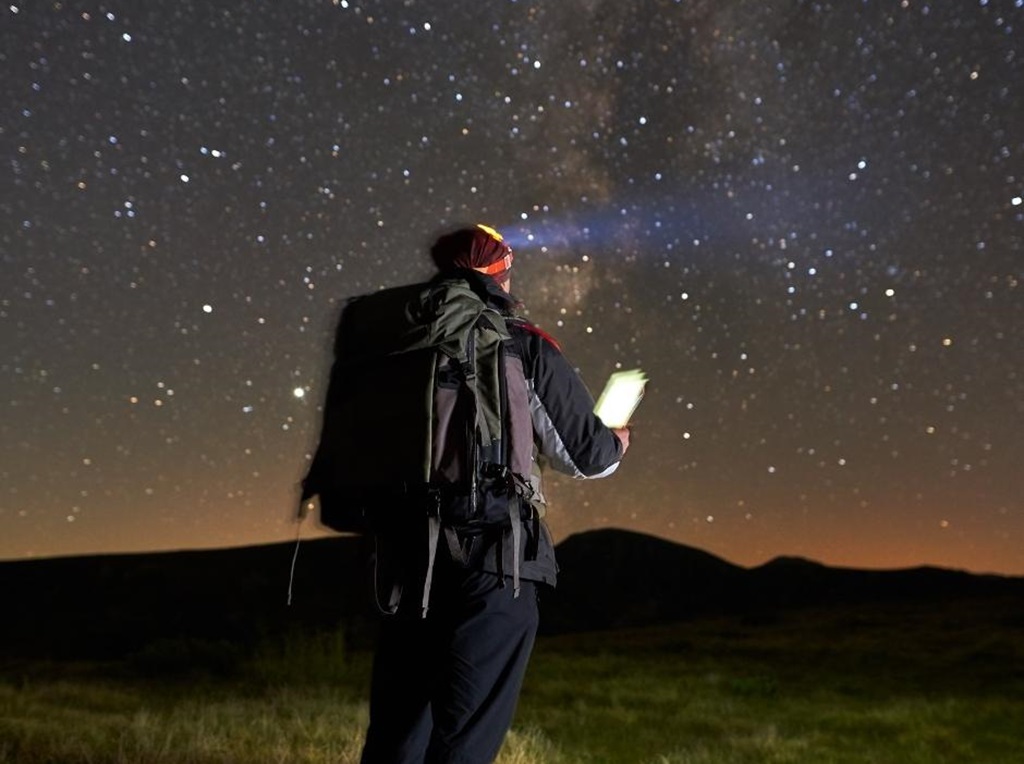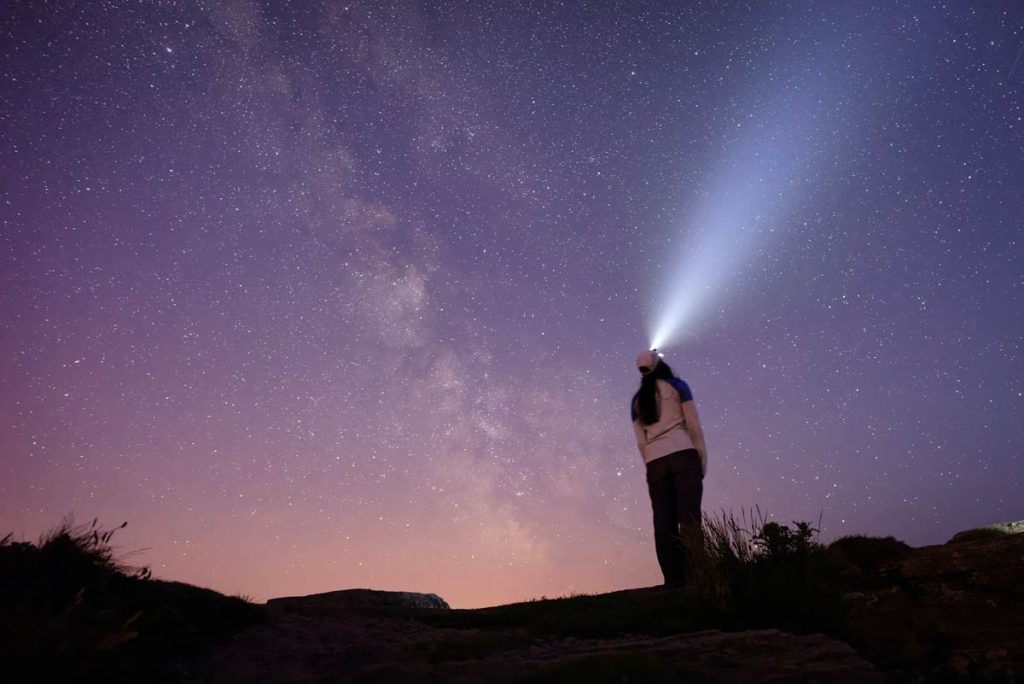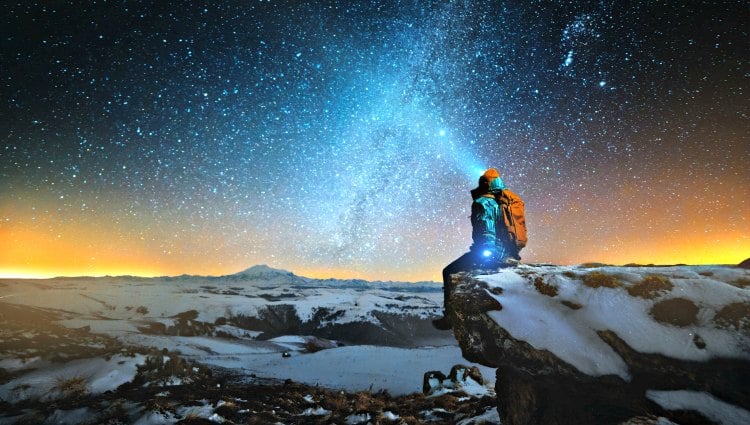Hiking at night can be rewarding and a special experience, but it also needs extra precautions to ensure your safety. Hiking at night can pose extra risks matched to hiking during the day, so it is vital to exercise caution, be prepared, and prioritize safety at all times. If you are uncomfortable or inexperienced with navigating at night, it is best to avoid it or hike with any person who has experience.
Here are few tips for hiking at night
Plan your route: Before going out, research and plan the route fully. Familiarize yourself with the terrain, trail map, and landmarks, check for any trail closures or limitations and be aware of the estimated duration of the hike.
Check the weather: Weather situations can affect your safety and visibility at night. Check the weather forecast heading out and be prepared for changes in wind, temperature, and precipitation.
Bring appropriate gear: Ensure you have the right hiking gear, including a reliable flashlight like Arkfeld Pro Flat EDC flashlight. Test your equipment before heading out to make sure it is in the best working situation. Wear the right clothing and footwear for the weather situations and terrain, and pack water, food, and first aid supplies.
Tell someone your plans: inform a family member, friend, or park ranger about your hiking plans, including your intended route, estimated time of return, and any emergency contact details.
Take it slow: Hiking at night needs slower and more alert movement. Watch your footing, take little steps, and be mindful of any risks or obstacles on the trail, such as tree boots, loose rocks, or uneven terrain.
Stay on the trail: Stick to the designated trail and reject taking shortcuts or deviating from the path, as it can be simple to get disoriented in the dark. Many hiking trails have rocks, markers on trees, or posts, to help you stay on the right path. Pay close focus to these markers and follow them rightly.
Use your senses: Your senses are heightened at night, so use them to your benefit. Listen to sounds like animal noises or flowing water, and use your sense of touch to feel the terrain and any items around you.
Be alert of wildlife: Wildlife behavior can change at night, so be alert and avoid shocking animals. Make noise as you hike to alert them of your presence, and carry bear spray or other wildlife safety equipment.
Stay oriented: Use a GPS, compass, or other navigation tools to stay oriented and track your progress. Be alert of distinctive or landmark specs along the trail to help you stay on track. While GPS gadgets and smartphones can be helpful for navigation, they can be unreliable, mainly in remote areas with bad signal reception. Forever carry a compass and map as a backup, and know how to use them.
Stay alert: Hiking at night needs heightened awareness. Watch your step, be mindful of your surroundings, and be alert of potential risks, such as rocks, uneven terrain, roots and wildlife.
Avoid hiking alone: It is usually safer to hike with a group or buddy, mainly at night. If you must hike alone, take extra precautions and be alert of your surroundings at all times.
Stay calm in case of emergencies: if you encounter an emergency situation, such as getting injured or getting lost, stay relaxed and use your emergency supplies, such as whistles, to signal for help.
Remember, hiking at night can pose extra risks matched to hiking during the day, so it is vital to exercise caution, be prepared, and prioritize safety at all times. If you are uncomfortable and inexperienced with navigating at night, it is best to avoid it or hike with someone who has experience.
Can I use the moon to navigate?
The moon and stars can be used as a natural navigation aid when doing night hikes. Here are some tips on how to use the moon for navigation.
Know the moon phase: Familiarize yourself with the present moon phase before going out on your hike. The moon goes through different phases, such as the half moon, full moon, crescent moon, etc. and each phase gives different levels of visibility and illumination. A complete moon gives the most light, with a crescent moon gives the least.
Use the moon as a reference point: if you can identify specific specs on the moon surface, you can use them as reference points to plan your direction. For example, you can use the position of mountains, craters, or other distinctive lunar features to establish your way of travel.
Use the moon as a general direction indicator: The moon usually rises in the east and sets in the west, and its position in the sky replaces throughout the night. You can use the moon as a common direction indicator by observing its movement. For example, if the moon rises on your left, you can guess you are facing north, and if it rises on your right, you can guess you are facing south.
Consider the moon position in related to your way: if you are following a special trail or route, take into consideration the moon position and connect it with your path. For example, if your trail is supposed to run north-south, and the moon is to the east, you can use it as a reference to stay on track.
Be mindful of changing moonlight situations: Bear in mind that the moon’s position and illumination can be replaced throughout the night as it moves across the sky and goes through different phrases. Be prepared for replacing moonlight situations and adjust your navigation accordingly.
Use the moonlight to better visibility: Moonlight can give illumination on the trial, making it easier to view the terrain and navigate. If you have a clear view of the moon and the surrounding place, use the moonlight to your benefit to better your visibility.
Using the moon for navigation at night can be a supportive tool, but it is vital to rely on other navigation techniques as well, such as compass, map, and GPS, to make sure safety and accuracy. Forever exercise caution and use your top judgment when navigation in unfamiliar terrain.
⚠ Article Disclaimer
The above article is sponsored content any opinions expressed in this article are those of the author and not necessarily reflect the views of CTN News








